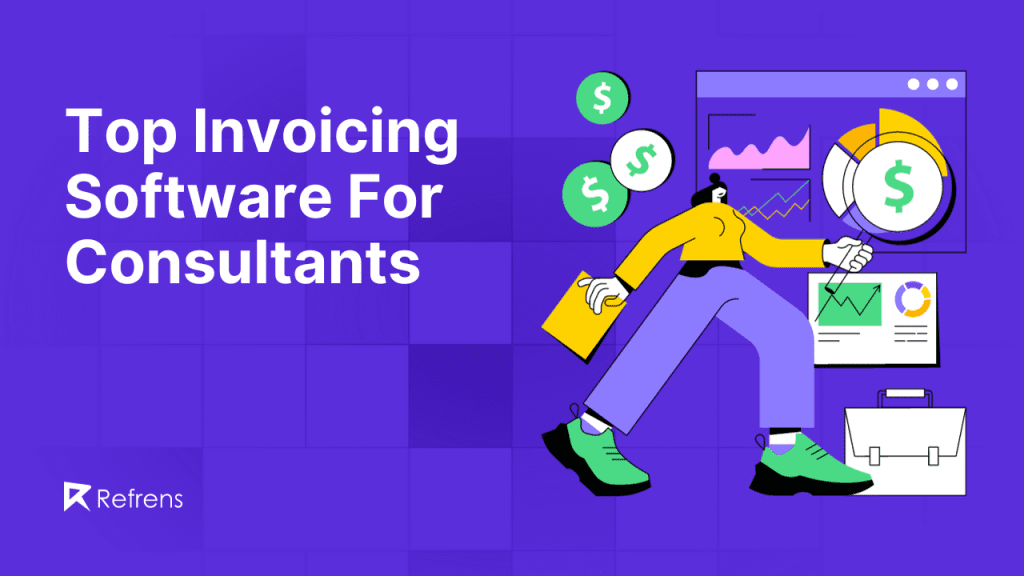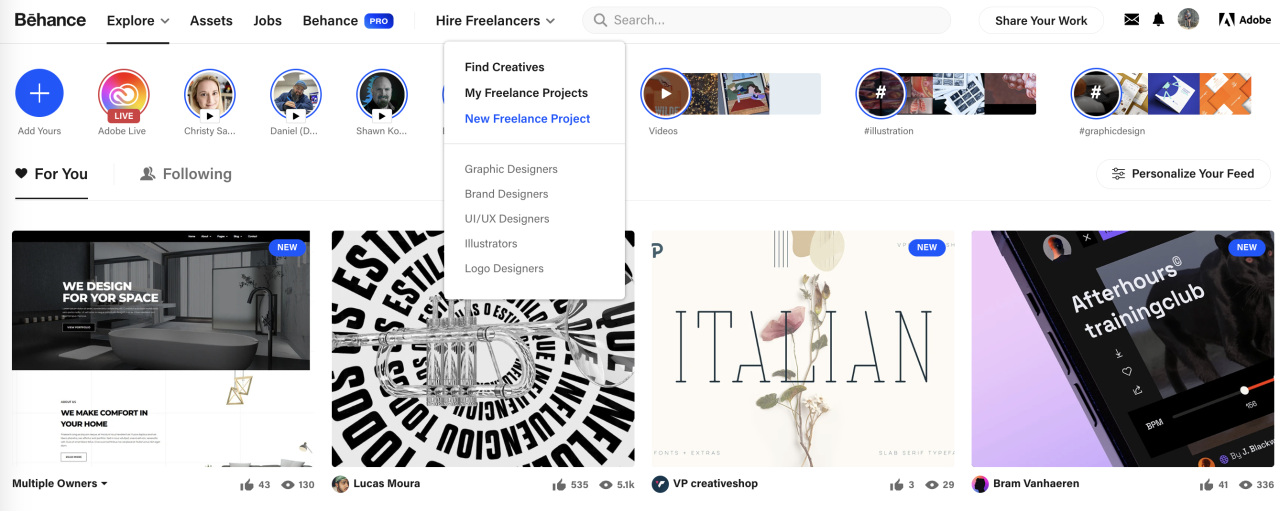Turning your freelance expertise into a valuable product is a smart move. This comprehensive guide will walk you through the process, from assessing the marketability of your service to scaling your product for wider reach. We’ll cover crucial aspects like defining your product, developing a robust strategy, and creating a successful sales and marketing plan.
Imagine transforming your freelance writing service into an online course, or your graphic design skills into a collection of templates. This guide provides a roadmap to help you achieve this transition, offering actionable steps and insightful examples to help you successfully launch your own product.
Identifying Your Freelance Service’s Marketability
Assessing the demand for a freelance service is crucial for its success. A well-defined understanding of market demand, problem-solving capability, and target audience can significantly increase the likelihood of a freelance service being profitable and sustainable. This section will provide methods for evaluating your service’s marketability, considering high-demand and low-demand examples, and analyzing target audience dynamics.Understanding the potential market for your freelance service is a critical step in establishing its viability.
Thorough market research is paramount in ensuring that your service aligns with current needs and possesses a strong potential for profitability. This includes identifying target clients, understanding their specific requirements, and evaluating the competitiveness of the market.
Assessing Demand for Your Freelance Service
Market research methodologies can be utilized to effectively evaluate the demand for a freelance service. Tools like online surveys, social media listening, and industry forums can provide insights into potential client needs and pain points. Analyzing competitor offerings and pricing strategies can also illuminate market trends and potential gaps. Analyzing existing client reviews and testimonials can also provide insights into the effectiveness of the service.
This comprehensive approach helps gauge the current demand and future potential for your service.
Determining If Your Service Solves a Real Problem
Identifying a genuine problem that your service addresses is fundamental to its marketability. A service that effectively tackles a client’s pain point or need will resonate with the target audience and establish a strong foundation for success. For instance, a freelance service specializing in optimizing online marketing campaigns addresses the common problem of businesses struggling to achieve optimal results from their online presence.
Conversely, a service that does not cater to a real need or pain point is less likely to attract clients and generate revenue. Therefore, thorough market research and a keen understanding of potential clients’ challenges are essential for developing a viable and effective service.
Examples of Services with High and Low Demand
High-demand freelance services often address pressing industry needs, such as website development, social media management, or graphic design. These services directly impact client businesses and frequently form a key component of their operational strategies. Conversely, services with low demand may lack a clear market need or have limited appeal, such as specialized niche services that do not directly address a widespread issue.
Analyzing the market saturation and the existing solutions available for a service can reveal potential areas of low demand. Keeping up with industry trends and innovations is essential in adapting to changing needs and demands.
Understanding Your Target Audience
Comprehending your target audience is critical for tailoring your service offerings and marketing strategies. Understanding their demographics, interests, and pain points will enable you to craft a message that resonates with them. This knowledge is essential in developing a marketing plan that effectively targets the ideal clients for your service. For example, a service targeting small business owners will differ significantly from one targeting large corporations.
This understanding enables tailored communication and targeted marketing.
Comparing Freelance Service Niches
| Freelance Service Niche | Potential Market Size | Profitability Potential |
|---|---|---|
| Web Development | Large | High |
| Social Media Management | Medium | Medium |
| Virtual Assistant Services | Large | Medium |
| Copywriting | Large | Medium |
| Graphic Design | Medium | Medium-High |
| Consulting | Large | High |
This table provides a general overview of different freelance service niches and their potential market size and profitability. The specifics can vary greatly depending on factors such as location, specialization, and market saturation. Factors such as competition, pricing strategies, and client acquisition will significantly impact the profitability of each niche. This table serves as a starting point for evaluating different freelance service options.
Defining Your Product

Turning a freelance service into a sellable product involves careful consideration of its potential and the target audience. This crucial step involves packaging your expertise into a format that is easily digestible and valuable to clients. A well-defined product can significantly increase your income and establish you as an authority in your niche.This process requires understanding the core value proposition of your service.
What specific problems does it solve for your clients? By identifying these pain points and crafting a product that addresses them effectively, you create a strong foundation for success. This approach also helps in attracting a more focused and engaged customer base.
Transforming Freelance Services into Tangible Products
Defining the deliverables and services within your freelance offering is the first step in transforming it into a tangible product. Categorizing these elements helps in creating a structured and organized product. For example, a writing service might offer various deliverables, such as blog posts, articles, website copy, and social media content. Clearly outlining these deliverables ensures that clients understand the scope of work and allows you to create products that match specific needs.
Product Categorization Structure
A well-organized structure is essential for creating a comprehensive product line. This structure should reflect the different services offered and the unique value proposition of each. For instance, a writing service can be categorized into different skill sets or specializations. This structure will allow for the creation of individual products or bundles that cater to particular niches or needs.
Examples: Writing Service Packaging
A writing service can be packaged into various formats, including courses, ebooks, and templates. A writing course might cover various aspects of content creation, from brainstorming and research to writing and editing. An ebook could focus on a specific niche, such as writing compelling product descriptions or crafting engaging blog posts. Templates can be offered as downloadable documents to streamline the writing process for clients.
This flexibility allows you to cater to a diverse audience and different learning styles.
Product Formats
Different product formats can cater to different learning styles and needs. Courses are ideal for comprehensive knowledge transfer, while ebooks are suitable for in-depth information delivery. Templates provide practical tools, and software solutions can automate tasks or provide specific functionality. Each format has its own advantages and can be used to complement or enhance the others.
Table: Service Offerings and Product Transformation
| Service Offering | Potential Product Format | Example |
|---|---|---|
| Social Media Management | Course, Template | Social media strategy course, social media content calendar template |
| Website Design | Ebook, Software | Ebook on web design principles, website builder software |
| Graphic Design | Course, Templates | Graphic design principles course, logo template pack |
| Virtual Assistant Services | Course, Checklist | Virtual assistant training course, task management checklist |
| Copywriting | Ebook, Templates | Copywriting guide ebook, sales page templates |
Developing a Product Strategy

A robust product strategy is crucial for transforming your freelance service into a profitable product. This strategy encompasses not only the creation of a compelling product but also the critical aspect of pricing, which directly impacts profitability and market appeal. Understanding your ideal customer’s price sensitivity and adopting a suitable pricing model are vital steps in achieving success.Defining a pricing strategy that aligns with your product’s value proposition and the market landscape is essential for long-term viability.
This involves careful consideration of various factors, from production costs to competitor analysis. A well-defined pricing strategy ensures that your product generates revenue while maintaining a competitive edge in the market.
Pricing Strategy for Your Freelance Service Product
A thoughtful pricing strategy ensures that your product remains competitive and profitable. It requires careful consideration of various factors, from production costs to market demand. This section will guide you through the process of establishing a pricing strategy for your freelance service-based product.
Determining Your Ideal Customer’s Price Range
Understanding your ideal customer’s willingness and ability to pay is paramount. Researching similar products, analyzing competitor pricing, and understanding market trends will help you identify the price range your target audience is comfortable with. Consider factors like the perceived value of your service, the complexity of your product, and the overall market demand.
Pricing Models for Freelance Service Products
Several pricing models can be employed for freelance service-based products. Choosing the right model depends on your service’s complexity, the value proposition, and your target market.
- Tiered Pricing: This model offers different packages or tiers with varying features and price points. It allows you to cater to different customer needs and budgets. For instance, a basic tier might include essential features, while a premium tier offers advanced options. This model is effective when the complexity and value proposition of your service differ across various levels.
- Subscription Models: These models charge recurring fees for access to your product or services. Subscription models are suitable for ongoing services, like ongoing website maintenance or monthly social media management. They provide consistent revenue streams and foster customer loyalty.
- One-Time Purchases: This model is suitable for products with a clear end goal, like a specific report or a one-off consultation. This is common for products with a tangible output that customers can use without further access. Clear communication about the scope of work is critical in this model to avoid misunderstandings.
Determining a Profitable Pricing Structure
Profitability hinges on careful cost analysis and revenue projections. Consider direct costs (materials, tools, time) and indirect costs (marketing, administrative overhead). Calculate your desired profit margin and ensure your price point reflects these factors. Use tools like spreadsheets to track costs and revenues, and analyze your financial performance over time.
Examples of Different Pricing Models
- Example of Tiered Pricing: A graphic design service might offer a basic package for logo design at $200, a standard package for branding guidelines at $500, and a premium package including brand assets and a year of support at $1000.
- Example of Subscription Model: A social media management service might charge $500 per month for managing a client’s social media presence, offering a scalable approach for various client needs.
- Example of One-Time Purchase: A freelance writer might offer a report on market trends for $500, which is a one-time payment for the completed report.
Pricing Model Comparison
| Pricing Model | Pros | Cons |
|---|---|---|
| Tiered Pricing | Caters to diverse needs, allows for higher profit margins | Can be complex to implement, requires clear differentiation between tiers |
| Subscription Model | Recurring revenue, customer loyalty, predictable income | Requires significant marketing and customer retention efforts |
| One-Time Purchase | Clear scope of work, straightforward transaction | May not be as scalable as other models, revenue is less predictable |
Creating a Sales and Marketing Plan
A robust sales and marketing plan is crucial for transforming your freelance service into a successful product. It Artikels how you will reach your target customers, communicate the value proposition of your product, and drive sales. This plan acts as a roadmap, guiding your efforts and ensuring that your marketing efforts are aligned with your overall business goals.A well-defined sales and marketing strategy enables you to understand your ideal customer, craft compelling messages, and select the most effective channels to connect with them.
This targeted approach increases the likelihood of conversion and builds a strong foundation for long-term growth.
Identifying Your Ideal Customer Persona
Understanding your ideal customer is paramount to crafting effective marketing messages and selecting the right channels. A well-defined persona includes demographics, psychographics, pain points, and motivations. By understanding their needs and desires, you can tailor your marketing efforts to resonate with them on a deeper level. This personalized approach fosters trust and increases the chances of conversion.
For example, if you offer freelance writing services, your ideal customer persona might be a small business owner who lacks the time or resources to create high-quality content.
Effective Marketing Strategies for Your Product
Crafting a compelling value proposition is essential for attracting potential customers. Highlight the unique benefits and advantages of your product, showcasing how it solves problems and enhances the customer experience. This clear and concise message differentiates your product from competitors and emphasizes its value. Use persuasive language that connects with your target audience on an emotional level.
For instance, if you are offering website design services, emphasize the improved user experience and increased conversion rates your product provides.
Establishing an Online Presence
Building a strong online presence is essential for reaching potential customers. A professional website, engaging social media profiles, and active participation in online communities are crucial components of a robust online strategy. This presence establishes credibility, builds trust, and provides a platform to showcase your expertise and the value of your product. Consistent branding and messaging across all online platforms reinforce your brand identity and help create a cohesive customer experience.
Consider creating a blog to share valuable content related to your service, establishing you as an authority in your field.
Marketing Channels to Promote Your Product
Selecting the right marketing channels is critical for reaching your target audience effectively. These channels can range from social media marketing to content marketing and paid advertising. Understanding the strengths and weaknesses of each channel is key to optimizing your marketing efforts. For example, if your target audience is active on LinkedIn, focusing your efforts on this platform would be highly effective.
Marketing Channel Effectiveness
| Marketing Channel | Description | Effectiveness | Examples |
|---|---|---|---|
| Social Media Marketing | Utilizing platforms like Facebook, Instagram, and Twitter to connect with potential customers. | High, particularly for reaching younger audiences. | Running contests, creating engaging content, using targeted ads. |
| Content Marketing | Creating and distributing valuable content, such as blog posts, articles, and videos, to attract and engage potential customers. | High, builds trust and establishes expertise. | Guest blogging, creating educational resources, producing webinars. |
| Search Engine Optimization () | Optimizing your website and content to rank higher in search engine results pages (SERPs). | High, drives organic traffic. | research, on-page optimization, link building. |
| Paid Advertising | Using platforms like Google Ads and social media ads to reach a wider audience. | Variable, depends on targeting and budget. | Targeted ads on Google, Facebook, and other platforms. |
| Email Marketing | Building an email list and sending targeted emails to nurture leads and promote your product. | High, for direct communication with potential customers. | Newsletter, promotional offers, follow-up emails. |
Product Development Process
Transforming your freelance service into a tangible product requires a structured approach to development. This phase focuses on building a Minimum Viable Product (MVP) and gathering feedback to refine and improve the product iteratively. A well-defined product development process ensures that the final product meets the needs of your target audience and aligns with your business goals.
Minimum Viable Product (MVP) Development
Building an MVP involves creating a version of your product with only the essential features. This approach minimizes development time and cost while maximizing the value received from early feedback. The MVP should be functional and demonstrate the core value proposition.
- Define the core functionalities of your product. Focus on the core value proposition of your freelance service. This involves identifying the most crucial features needed to satisfy the fundamental needs of your target audience.
- Prioritize features. Identify the most important features that must be included in the MVP. This ensures that the initial product release is focused and effective, delivering value to the user as quickly as possible.
- Develop a prototype. Create a basic version of the product to demonstrate its functionality. This helps in evaluating the feasibility of the product and identifying potential problems early in the development process.
- Conduct user testing. Gather feedback from early adopters to understand how the product functions in a real-world scenario. This helps in identifying usability issues and areas for improvement. Feedback will be crucial in making necessary changes.
Gathering Feedback from Early Adopters
Early adopters provide invaluable insights into the product’s usability and functionality. Actively seeking and incorporating their feedback is crucial for refining the product and ensuring it meets the needs of the target market.
- Identify your target audience. Determine the specific individuals who are most likely to use your product. This helps in focusing your feedback gathering efforts on the most relevant users.
- Implement feedback mechanisms. Create channels for early adopters to provide feedback, such as surveys, online forums, or direct communication. The mechanism should be user-friendly and encourage participation.
- Encourage participation. Clearly communicate the importance of feedback and highlight the potential impact of their contributions on the product’s development. This fosters engagement and a sense of collaboration.
- Use different methods for feedback collection. A combination of methods ensures that feedback is gathered from diverse perspectives and provides a comprehensive understanding of the product’s strengths and weaknesses. This includes user interviews, focus groups, and surveys.
Feedback Mechanisms for Product Improvement
Effective feedback mechanisms are essential for iteratively improving the product based on user input. This process ensures that the product remains relevant and meets the evolving needs of the target audience.
- Use surveys. Employ surveys to gather quantitative data on user preferences and satisfaction levels. Surveys are efficient for collecting structured information and analyzing responses statistically.
- Utilize user interviews. Conduct in-depth interviews to gain qualitative insights into user experiences and motivations. This method helps in understanding the “why” behind user responses.
- Establish a feedback forum. Create a dedicated forum for users to share their experiences and provide suggestions. This allows for ongoing dialogue and collective problem-solving.
- Track user behavior. Monitor user interactions with the product to identify areas of confusion or frustration. This allows for data-driven improvements and modifications.
Iterating and Improving the Product
Iterative improvements are vital for creating a high-quality product that effectively addresses user needs. By incorporating feedback and refining the product, you can build a strong foundation for long-term success.
- Prioritize feedback. Evaluate feedback based on its impact and relevance. Focus on changes that have the biggest impact on user experience and satisfaction.
- Implement changes. Develop a system for efficiently implementing changes based on feedback. This process should involve thorough testing to ensure the changes do not introduce new issues.
- Retest the product. After implementing changes, retest the product with a similar group of users to evaluate the effectiveness of the improvements. This ensures that the changes are having the desired impact.
- Document the process. Maintain a record of all feedback, changes, and testing results. This provides a valuable resource for future development and allows for a clear understanding of the evolution of the product.
Stages of Product Development
This table Artikels the key stages of product development, from initial concept to final release.
| Stage | Description |
|---|---|
| Concept | Initial idea generation and validation. |
| MVP Development | Creating a functional, basic version of the product. |
| Feedback Collection | Gathering feedback from early adopters. |
| Iteration and Improvement | Refining the product based on feedback. |
| Testing | Thorough testing to ensure quality and functionality. |
| Release | Launching the product to the target audience. |
Delivery and Support

Delivering a product effectively and providing exceptional support are crucial for customer satisfaction and long-term success. A well-designed delivery system, coupled with comprehensive support documentation and responsive customer service, fosters trust and encourages repeat business. This section details how to craft these vital elements for your freelance product.
Designing a Delivery System
A robust delivery system ensures your product reaches customers seamlessly. This involves clear communication about timelines, a well-defined process, and appropriate packaging if applicable. For digital products, this may include secure download links, access codes, or automated email confirmations. Physical products require careful consideration of shipping options, handling, and potential delays. Implementing a system that acknowledges orders and tracks shipments improves transparency and builds customer confidence.
User Support Documentation
Comprehensive user support documentation is essential for guiding customers through the product’s features and functionality. Detailed tutorials, FAQs, and a well-organized knowledge base are crucial for empowering users and reducing support requests. This proactive approach not only streamlines the support process but also positions your product as user-friendly and valuable. Consider including screen recordings, step-by-step guides, and examples to make the information easily digestible.
Customer Support and Issue Resolution
Prompt and effective issue resolution is key to customer satisfaction. Establish clear communication channels, respond to inquiries within a reasonable timeframe, and consistently provide helpful solutions. Implementing a structured approach to issue resolution, including escalating complex problems to appropriate personnel, maintains a positive customer experience. Acknowledging and addressing customer concerns promptly demonstrates professionalism and builds trust.
Different Support Channels
Effective customer support necessitates a variety of channels to cater to different preferences. This flexibility allows customers to connect with you in the manner that best suits their needs and circumstances. The choice of channels should align with your product and target audience.
| Support Channel | Pros | Cons |
|---|---|---|
| Allows for detailed communication, provides a permanent record, suitable for complex issues. | Can be slower than real-time interactions, might not be suitable for urgent issues. | |
| Phone | Allows for real-time interaction and clarification, excellent for complex problems or sensitive issues. | Can be expensive, requires staff availability, may not be suitable for all types of issues. |
| Live Chat | Offers immediate assistance, ideal for troubleshooting and basic inquiries. | Requires dedicated staff for consistent availability, might not be suitable for complex problems. |
| Social Media | Reaches a broad audience, fosters community engagement. | Can be challenging to manage complex issues, may not be the most appropriate for confidential information. |
| Knowledge Base/FAQ | Provides readily available information, accessible 24/7, reduces support requests for common issues. | May not cover all possible issues, needs regular updates to maintain accuracy. |
Product Scaling and Growth

Scaling a product successfully requires a strategic approach that considers both the expansion of the user base and the maintenance of quality. This involves careful planning and execution to ensure the product remains valuable and appealing to a growing customer base. This section will Artikel methods for scaling your product, strategies for maintaining quality, and opportunities for expanding product offerings and services.Scaling a freelance product effectively requires a multi-faceted strategy, going beyond simply adding more features.
It encompasses understanding your target audience, optimizing your service delivery, and proactively anticipating the needs of your growing clientele. This process is crucial for long-term success and sustainable growth.
Methods for Scaling to a Wider Audience
Expanding your product’s reach to a wider audience requires a multifaceted approach. Market research is critical to understanding potential new segments and identifying the most effective channels for reaching them. Effective marketing strategies, including targeted advertising campaigns and strategic partnerships, can significantly expand your customer base. Building a strong online presence through social media engagement, search engine optimization, and content marketing is also essential.
Strategies for Maintaining Quality as the User Base Grows
Maintaining high quality as your user base increases is paramount. Establishing clear service standards and protocols from the outset is crucial. This ensures consistent quality, regardless of the volume of work. Implementing quality control measures, such as rigorous reviews and feedback loops, helps identify and address potential issues early. Training and development for your team are essential to maintain proficiency and adapt to evolving needs.
Utilizing technology and automation to streamline processes and handle increased workloads can also be a significant asset.
Expanding Product Offerings and Services
Exploring opportunities to expand your product line or services is a natural step in the growth process. Understanding market trends and identifying unmet needs is essential. Thorough market research will inform decisions on new offerings. Consider offering specialized packages or add-ons that cater to specific customer needs or address new market demands.
Methods for Expanding the Product Line and Services
Expansion of the product line and services should be guided by a well-defined strategy. Analyze existing offerings to identify gaps or areas for improvement. Identifying complementary services that enhance your existing product is an effective approach. Conducting surveys or focus groups to gather feedback from your user base is an excellent way to gauge their interest in new services or features.
Scaling Strategies for Products and Services
This table Artikels various scaling strategies for products and services, categorized by the type of growth and the approach taken.
| Scaling Strategy | Description | Examples |
|---|---|---|
| Organic Growth | Expanding market share by improving existing offerings and enhancing customer experience. | Improving customer support, enhancing product features, and implementing loyalty programs. |
| Strategic Partnerships | Collaborating with other businesses to access new markets or customers. | Collaborating with complementary businesses to offer bundled services, or cross-promoting on social media. |
| Targeted Marketing | Focusing marketing efforts on specific demographics or segments to maximize reach. | Creating targeted advertising campaigns on social media or specific online platforms. |
| Technology Integration | Implementing technology to automate processes, improve efficiency, and scale operations. | Implementing CRM software to manage customer relationships, or using project management software to improve team collaboration. |
| Product Diversification | Introducing new products or services to broaden your offerings and appeal to a wider audience. | Expanding the range of freelance services offered, like graphic design, web development, and content creation. |
Last Recap

In conclusion, converting your freelance service into a product is a rewarding journey. By carefully considering your service’s marketability, defining a compelling product, and developing a solid strategy, you can build a profitable venture. This guide provides a framework for understanding the key stages, from initial product development to scaling and growth. Remember to focus on your target audience, create valuable content, and provide excellent customer support to build a successful product.